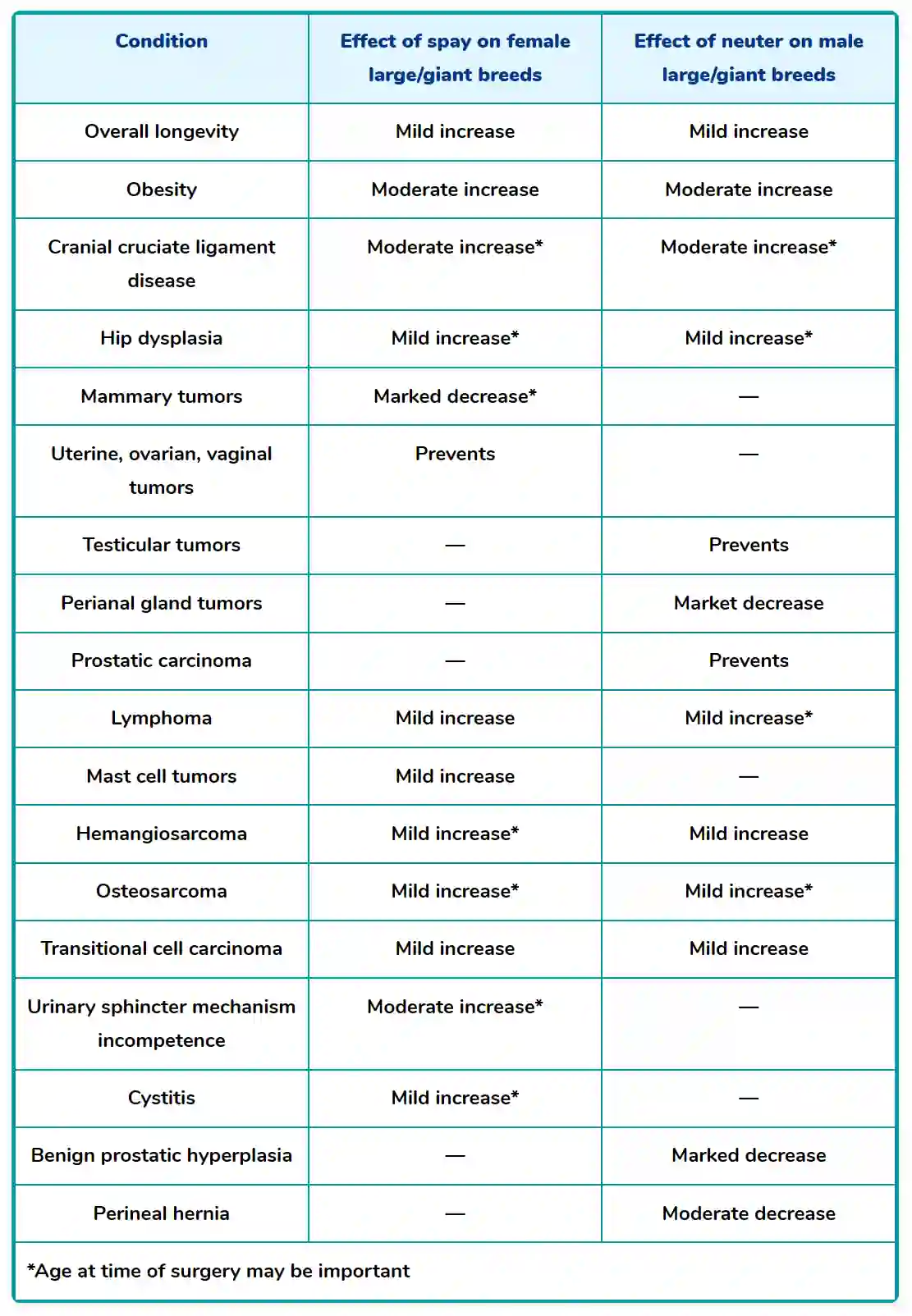You May Be Lambasted Over This, but Hold Your Ground
It's long been held as the hallmark of responsible dog ownership. If you don't do this, you're labeled irresponsible and a scumbag contributor to unwanted excess. But now a new truth is emerging with plenty of evidence to suggest and support a new modus operandi. Are you in?

STORY AT-A-GLANCE
- Despite a mounting body of evidence pointing to the health risks associated with traditionally spaying and neutering dogs, most people in the U.S. believe it is the right and only way to be a responsible dog owner
- Fortunately, some veterinarians are beginning to realize the benefits cited for spay/neuter of dogs don’t outweigh the significant health risks associated with these procedures
- Risks include an increase in obesity, cranial cruciate ligament ruptures, hip dysplasia, several types of cancer, urinary incontinence and cystitis
- It’s time to recognize that what’s best for our dogs’ health is a separate issue from the problem of pet overpopulation
- There are alternative procedures to full spays and neuters that leave dogs unable to reproduce but still able to produce the sex hormones that studies show are crucially important to their health and longevity
Editor's Note: This article is a reprint. It was originally published July 13, 2018.
The vast majority of veterinarians, conscientious pet parents and dog advocates across the U.S. sincerely believe the best thing we can do for our canine companions is spay or neuter them at an early age.
Conventional wisdom holds that dogs need to be desexed to avoid diseases of the reproductive organs, as well as to avoid adding to pet overpopulation. This belief is so firmly entrenched in our American culture that pet owners who don’t spay or neuter are considered irresponsible and deserving of scorn.
In veterinary school, students are taught to promote desexing surgery to every pet parent, and the only procedures they learn are full spays and neuters, which desex (remove animals’ ability to produce sex hormones) as well as sterilize (prevent reproduction).
The Decision to Desex Is Often Based on Convention, Habit, or Misconception of Health Benefits
Today we can refer to a steadily growing body of scientific research that indicates spay/neuter has a significant downside for dogs.
“… [A]s we’re now learning,” writes veterinarian Dr. Patty Khuly in an article for Veterinary Practice News, “preventing reproductive disease isn’t necessarily a good enough reason to remove organs; not if those organs offer more benefits than they pose risks.”1
In a report for Clinician’s Brief, Dr. Clara Goh, surgical oncologist at Colorado State University’s Veterinary Teaching Hospital states:
“The decision to perform this procedure [spay or neuter] is often based on convention, habit, or misconception of health benefits rather than on an evidence-based assessment of each patient.”2
Risks and Benefits of Spay/Neuter on Large and Giant Breed Dogs
Over the last several years, a number of small, breed-focused, primarily retrospective studies have been conducted on the effects of spay/neuter in large and giant breed dogs, including the Rottweiler and Golden Retriever. Goh of CSU provides the following information to illustrate what the research has uncovered about the potential benefits and adverse effects of gonadectomy:

To summarize the above information: Spaying or neutering large and giant breed dogs decreases or prevents most reproductive organ disease, as you would expect, since conventional desexing surgery removes some or all of those organs and the hormones they produce.
The diseases for which spayed or neutered dogs are at increased risk are, as you also might expect, some of the most common disorders seen in dogs today. They include obesity, cranial cruciate ligament (CCL) ruptures, hip dysplasia, several types of cancer, urine dribbling (incontinence) and cystitis (bladder inflammation).
The Risk of Obesity Is Increased in Spayed and Neutered Dogs
It’s worth noting that obesity in pets is at epidemic levels. In 2017, 56% of dogs were overweight or obese, and Khuly believes spay/neuter has played a significant role in the explosion of fat dogs over the last few decades.
“To be sure, it has a lot to do with how we feed ourselves and our families and the ‘food is love’ culture we reside in,” she writes. “It also has a lot to do with the rise of the pet food industry and the proliferation of diets and treats it so effectively markets. But could there be another component we conveniently tend to overlook? After all, everyone knows for sure that spayed and neutered dogs are heavier.
There’s no doubt about it. The inconvenient truth is that dog sterilization leads to fatter dogs. This we know. No one disputes it. Whatever you think about all these new studies on sterilization and certain diseases, the reality of the situation is this: Intact dogs are much more likely to enjoy healthy weights.”
Khuly addresses some great questions to her veterinary colleagues:
- Is spaying and neutering our dogs actually healthier for them?
- Have we been led astray in our thinking on this issue by our community’s desire to prevent pet overpopulation?
- Are veterinarians actually recommending what’s best for our individual dogs?
- Have we researched this issue well enough given our level of sophistication on so many other veterinary issues?
Khuly believes the health of dogs and the problem of pet overpopulation are two separate issues and should be view as such.
“After all,” she writes, “sterilization is not required to achieve normal population levels. In fact, in Europe, for example, where spaying and neutering isn't common, there is no dog overpopulation problem (and, incidentally, a much reduced incidence of canine obesity compared to U.S. dogs).”
Khuly hopes “… responsible Americans are completely capable of keeping their pets from breeding just like Europeans do.” But she laments that every time she brings up the subject, she gets “… lambasted by loud-voiced zealots who claim [she’s] irresponsibly encouraging pet overpopulation by suggesting there may be alternatives to sterilization.”
“… [U]ntil we … stop talking about overpopulation and sterilization in the same breath,” she concludes, “we’ll have to face the inevitable reality: Our dogs are fat, and they’re destined to get fatter. Perhaps one day we’ll be able to look at this problem more dispassionately, but until then, I expect to continue to see more obesity-related disease in dogs than almost any other medical condition.”
Khuly makes a good point about the connection between obesity in dogs and spay/neuter practices, and in general, it’s really uplifting to see an article like hers in a publication whose audience is primarily the conventional veterinary community. That said, all the risks associated with spay/neuter, overweight and obesity are entirely preventable when pet parents are committed to keeping their dog at a healthy weight.
Some Things to Think About if You’re Considering Spaying or Neutering Your Dog
Whenever possible, it's best to leave dogs intact. However, this approach requires a highly responsible pet guardian who is fully committed to and capable of preventing the dog from mating (unless the owner is a responsible breeder and that's the goal).
However, shelter veterinarians don't have the time or resources to build a relationship with every adoptive family, so the animals in their care need to be sterilized prior to adoption to prevent more litters of unwanted pets.
The second choice is to sterilize without desexing. This means performing a procedure that will prevent pregnancy while sparing the testes or ovaries so they can continue to produce hormones essential for the dog's health and well-being.
This typically involves a vasectomy for male dogs, and either a tubal ligation or modified spay (a hysterectomy) for females. The modified spay removes the uterus while preserving the hormone-producing ovaries. It also eliminates the possibility of pyometra because the uterus is removed.
Rarely, older, intact male dogs develop moderate to severe benign prostatic hyperplasia (an enlarged prostate) that may be improved with conventional neutering. Generally speaking, mature intact dogs have had the benefit of a lifetime of sex hormone production, so the endocrine imbalances we see with spayed or neutered puppies don't occur when dogs are desexed in their later years.
Unfortunately, veterinary schools in the U.S. only teach full spays and neuters, so unless your own vet has obtained additional training in sterilization techniques that spare the ovaries or testicles (which is unlikely), you’ll have only one surgical option available to desex your pet.
In that case, you should wait until your dog has reached full musculoskeletal maturity, and if you have a female, you should wait until she’s completed her first estrus cycle before scheduling the surgery. Thankfully, the Parsemus Foundation maintains a list of veterinarians who perform vasectomies and hysterectomies (ovary-sparing spays) — click here to see if there’s a vet in your area.











